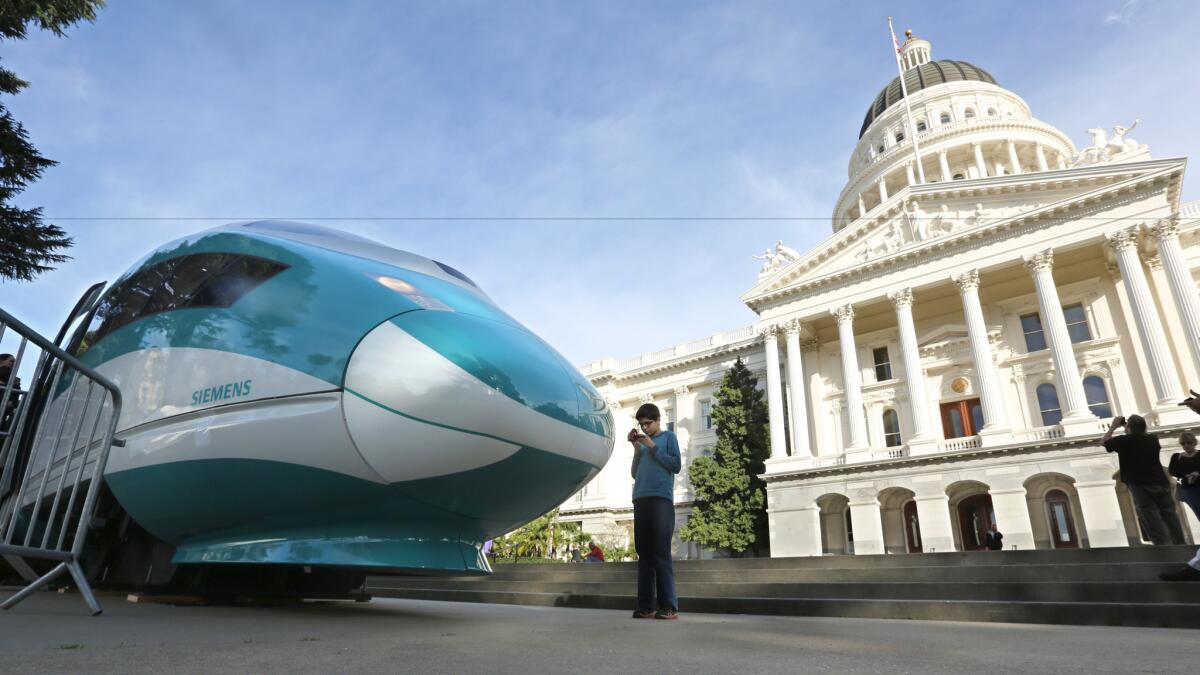Op-Ed: Forget cap and trade’s detractors, California’s carbon-pricing works

California’s cap-and-trade program to reduce carbon emissions and address climate change keeps on ticking as it was designed to, defying its critics. Cap-and-trade programs are considered to be among the most effective ways to reduce pollution, in particular carbon emissions, from power plants and other sources. These programs first cap pollution at reduced levels but also enable participating emitters to buy and sell allowances, or emissions permits, to achieve the required reductions in the least expensive way possible.
Lately, cap-and-trade detractors have warned that the California program is failing. Their dire assessment is in large measure based on the most recent auction of allowances, in May, in which only 11% of available permits were sold.
What the May auction really portends isn’t the demise of the state’s cap-and-trade project, but rather its success. Cap-and-trade programs have one goal: To reduce harmful pollution. And that is what is happening.
In truth, carbon emissions have fallen faster in California than anticipated, reducing the demand for emissions allowances and highlighting the achievements of the state’s overall strategy to reduce pollution. California has been a national and global leader in pioneering smart and workable environmental solutions that produce real results. And that tradition is continuing with its cap-and-trade efforts.
The results of the May auction show that the state’s emissions pricing mechanism adapted beautifully to the reduction in the demand for allowances. The program sets a minimum price, below which allowances will not be sold. So when demand for allowances falls (which means fewer are sold and even less greenhouse gas will be emitted), the gains are realized for the environment rather than in falling prices for permits to pollute. Some earlier carbon trading programs — including the largest one, set up by the European Union — do not have a minimum price. That has threatened the efficacy and stability of those efforts.
If California gets too far out ahead of other states in exacting a price for carbon emissions, it will see a loss of business activity.
There are multiple causes for the reduced demand for allowances. One is the improved efficiency of California’s economy, which is growing at the same time that it’s using less fossil energy and emitting less greenhouse gas. Another is the contribution from companion policies that directly reduce pollution, such as efficiency standards and infrastructure development for green electricity and transportation. A third is legal uncertainty. There is a pending lawsuit challenging the cap-and-trade program; although most lawyers expect the suit to be unsuccessful, the possibility that the challenge will succeed makes holding allowances seem like a risky bet. Again, the program’s minimum price shielded the market against too strong a reaction to this uncertainty.
Although the program is working as designed in California, there is a corollary problem associated with weak demand for emissions allowances: a decline in revenue from the auction. That in turn threatens the beneficiaries of those revenues, including energy-reduction programs in disadvantaged communities and the state’s high-speed rail project.
The point of cap and trade, however isn’t to raise money, it is to reduce emissions. The Legislature could address lower-than-expected auction revenues by directly funding the programs in question or reducing the supply of emissions allowances, which would increase their price enough to expand revenues.
Yet if California gets too far out ahead of other states in exacting a price for carbon emissions, it will see a loss of business activity. The give and take inherent in the market created by cap and trade — constrained by the minimum price and helped by other anti-pollution policies — is what allows the state to pioneer a green economy without killing growth.
The lack of a cap-and-trade crisis should not translate into complacency. California’s climate policies would be more successful and introduce less uncertainty for business if the Legislature would strengthen their footing. Especially relevant is the re-authorization of California’s landmark AB 32, which established the cap-and-trade program and set a limit on the state’s carbon emissions through 2020. That legislation was passed under Republican Gov. Arnold Schwarzenegger and implemented by Democratic Gov. Jerry Brown. Passing the next iteration of AB 32 should be a priority and an opportunity for a new generation of California climate change leaders.
Dallas Burtraw is a California native, an environmental economist and a senior fellow at Resources for the Future in Washington.
Follow the Opinion section on Twitter @latimesopinionand Facebook
More to Read
A cure for the common opinion
Get thought-provoking perspectives with our weekly newsletter.
You may occasionally receive promotional content from the Los Angeles Times.






